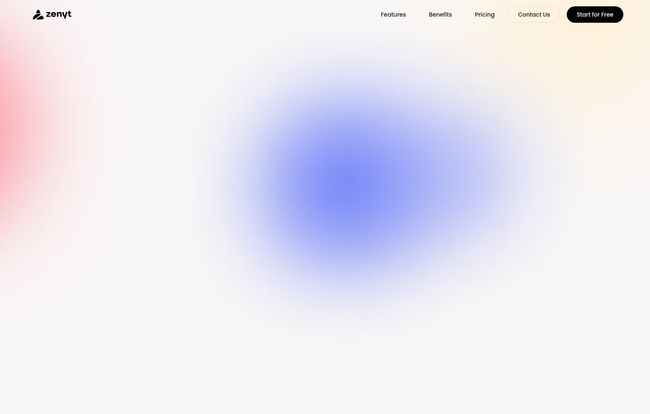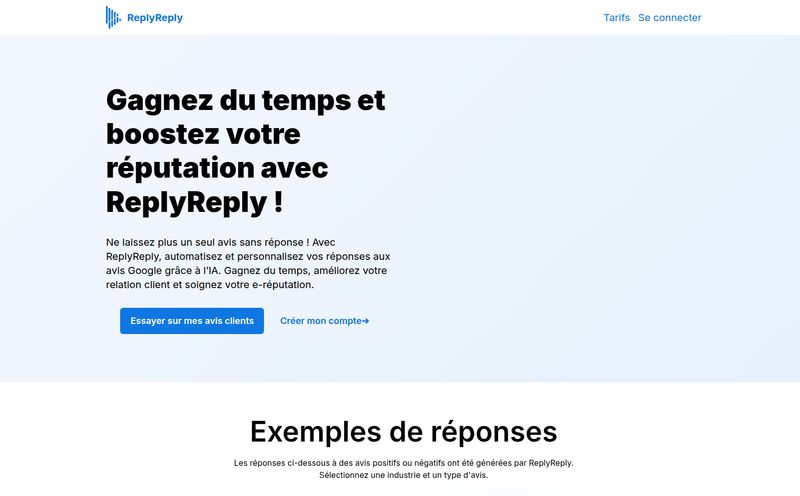You and me, two people who live and breathe e-commerce. You know that nagging feeling you get at 2 AM? The one that whispers, “Is the checkout button working on Android? Did that new plugin just break all my product images?” Yeah. That one.
For years, we’ve relied on a messy patchwork of frantic manual checks, angry customer emails, and clunky crawling tools to find these silent sales killers. It’s a game of digital whack-a-mole, and frankly, it's exhausting. I've spent more weekend hours than I care to admit hunting down some obscure bug that was tanking my conversion rate.
So when I first heard about Zenyt, an AI platform that promises to automatically find and fix these issues, my cynical SEO brain immediately went, “Yeah, right.” Another tool promising the world. But I have to admit, I was intrigued. An AI that browses your site like a real person? And fixes stuff for you? Okay, you have my attention. I decided to take a proper look, and well, here we are.
What is Zenyt, Really? (Beyond the Marketing Hype)
So, let's cut through the jargon. Zenyt isn't just another site auditor that spits out a 200-page PDF of problems for you to fix. That's old news. Instead, think of Zenyt as an AI agent—a little robotic employee—that you hire to constantly browse your e-commerce store. It doesn't just check for dead links; it mimics actual user flows. It tries to add things to the cart, navigate menus, and use filters, just like a real shopper would.
And when it finds something broken, clunky, or just plain weird? It flags it. But here’s the kicker: for many issues, it also presents a one-click solution. It’s like having a ghost in the machine, but a helpful one that tidies up after itself instead of just rattling chains and scaring away customers. It’s looking for those gremlins in your system—from serious accessibility problems to sneaky SEO mistakes that are costing you traffic.

Visit Zenyt
The Core Features That Actually Matter
Any platform can boast a long list of features. But as a professional, I only care about the ones that actually move the needle. Here’s what stood out to me in Zenyt.
The AI-Powered Audit: Your Digital Detective
This is the heart of Zenyt. The AI doesn’t just do a technical crawl. It performs what feels more like a user experience (UX) audit. It's programmed to spot things that frustrate real humans, like a button that’s impossible to click on mobile or a confusing checkout process. This is a huge step up from traditional tools that might tell you your page speed is slow but can’t tell you why users are rage-quitting on the cart page.
One-Click Fixes: Is It Really That Simple?
The “no-code” movement is everywhere, and Zenyt leans into it hard. When it identifies an issue, say, a broken form, it doesn’t just send you a cryptic error code. It often proposes a direct fix that you can implement with a single click. For small business owners or marketing managers who don’t have a developer on speed dial, this is incredible. Of course, it's not going to redesign your whole site, but for fixing the small, persistent bugs that drain revenue, it's a game-changer.
24/7 Monitoring: Your E-commerce Guardian Angel
This, for me, is about peace of mind. An e-commerce site is a living, breathing thing. You add a new app, update a theme, a third-party script changes—and suddenly, something breaks. Zenyt's constant monitoring means it catches these things as they happen, not a week later when you notice sales have mysteriously dropped by 30%. It turns site maintenance from a reactive fire-drill into a proactive, automated process.
My Honest Take: The Good, The Bad, and The AI
No tool is perfect. Let's get into the nitty-gritty. This is where the rubber meets the road.
What I Genuinely Like About Zenyt
First off, the time-saving is real. The hours spent manually checking user flows across different devices can now be spent on strategy, marketing, and things that actually grow the business. You’re essentially buying back your most valuable resource: time. I also love the proactive approach. Finding a problem before it affects a single customer is the holy grail of site management. And consolidating data from different potential problem areas (SEO, UX, accessibility) into one dashboard just makes sense. It stops the madness of having 15 different browser tabs open with 15 different analytics tools.
Where Zenyt Could Be Better
Let's be realists. The platform's effectiveness hinges entirely on how smart its AI is. If the AI is just a glorified, fancy-pants crawler, then the value proposition shrinks. I haven’t seen it fail yet, but the fear of a “dumb AI” is always there. It's also important to remember that this tool plugs into your existing store; it doesn’t replace it. You still need your Shopify, BigCommerce, or Magento setup running smoothly. And finally, the price. This isn't a $10-a-month plugin. It’s a serious investment, and you need to be at a scale where that investment will clearly pay for itself by protecting and increasing revenue.
Decoding the Zenyt Pricing Plans
Okay, let's talk money. This is often the deciding factor, right? Based on their site, Zenyt offers a pretty straightforward tiered system designed for different scales of business. It looks like they have monthly and yearly options, with a discount for the annual commitment.
Here’s a quick breakdown of their main plans:
| Plan | Price (Monthly) | Best For | Key Features |
|---|---|---|---|
| Core | $299/month | Growing stores ready to automate. | Full library of core AIs, unlimited AI runs & alerts, unlimited seats, email support. |
| Premium | From $999/month | Scaling brands needing custom solutions. | Everything in Core, tailor-made AI scans, diagnostic sessions, dedicated Slack access to the founders. |
That Slack access to the founders on teh Premium plan? That's a bold and pretty cool perk. It shows a certain confidence in their product and a commitment to high-touch service for their bigger clients. It’s a powerful signal for brands that need a true partner, not just another piece of software.
Who is Zenyt Actually For? (And Who Should Skip It)
I wouldn’t recommend Zenyt to everyone. If you just launched your store yesterday on a shoestring budget, this might be overkill. You probably have bigger fish to fry, like getting your first 100 visitors.
Zenyt is a perfect fit for:
- Established DTC Brands: If you have consistent traffic and sales, you have revenue to protect. Zenyt acts as your automated insurance policy.
- Scaling E-commerce Stores: When you're growing fast, things break more often. Zenyt helps you scale without the tech headaches.
- Marketing Managers Wearing Too Many Hats: If you're responsible for CRO, SEO, and UX but aren't a developer, this tool is your new best friend.
You might want to skip it if:
- You're a Hobbyist or a Brand New Store: The investment is likely better spent on initial customer acquisition for now.
- You Have a Full-Time Dev/QA Team: If you already have people dedicated to this 24/7, Zenyt might be redundant, though it could still make that team more efficient.
Final Thoughts: Is Zenyt a Worthwhile Investment?
After spending time looking into Zenyt, I'm genuinely optimistic. It represents a necessary shift in how we manage e-commerce websites—from tedious, manual spot-checking to intelligent, continuous automation. It’s not about being lazy; it's about being smart and allocating your human brainpower where it's needed most.
Is it magic? No. Will you still need to think about your business? Absolutely. But Zenyt feels like a powerful, tireless assistant that handles the grunt work, letting you focus on the bigger picture. For any serious e-commerce store, preventing even one major sales-blocking bug a year could easily pay for the service. For me, that's a calculation worth making.
Frequently Asked Questions About Zenyt
1. Do I need to know how to code to use Zenyt?
Nope. That’s one of its biggest selling points. It's built as a no-code platform, with one-click fixes for many common problems. You don't need to be a developer to use it effectively.
2. What e-commerce platforms does Zenyt work with?
Zenyt is designed to work with major e-commerce platforms. While you should always confirm on their site for the most up-to-date list, it's built for systems like Shopify, BigCommerce, Magento, and WooCommerce where complex user flows are common.
3. Is there a free trial for Zenyt?
Yes, the website has a “Start for Free” call-to-action, which typically implies a free trial or a limited free plan to let you test out the platform’s capabilities before committing to a paid plan.
4. How is Zenyt different from a standard SEO spider or website crawler?
A standard crawler, like Screaming Frog, is great for technical SEO—it follows links and reports on status codes, metadata, etc. Zenyt goes further by simulating user behavior. It tries to complete actions, like filling out a form or adding to cart, to test the user experience (UX) in a way a simple crawler can't.
5. Is the pricing fixed or does it vary?
The pricing seems to be tiered. The 'Core' plan has a fixed monthly price. The 'Premium' plan starts at a certain price point (“From $999/month”), which suggests it can be customized based on a store's specific needs, size, and the complexity of the custom AI solutions required.
6. Can Zenyt fix every single problem on my site?
It's best to be realistic. Zenyt can automatically fix a host of common, revenue-blocking issues. However, it's not going to solve deep-seated architectural problems or redesign your user interface. It’s a powerful repair and monitoring tool, not a full-service development agency.
Reference and Sources
For further information and to check out the platform for yourself, here are the official links:



